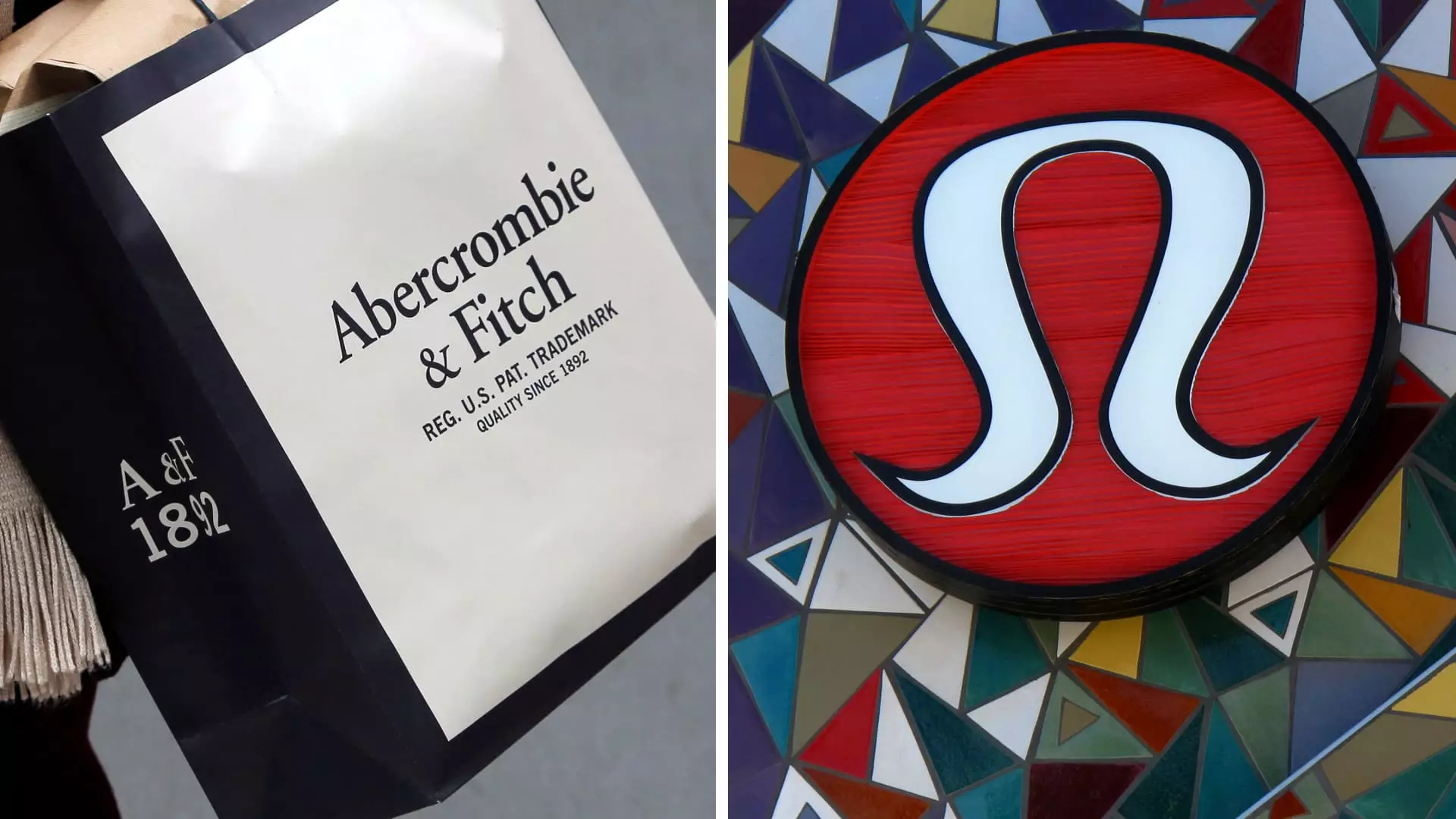The holiday season is typically a lucrative time for retailers in the U.S., yet recent reports reveal a conflicting narrative. While several renowned retailers have posted results that exceed initial expectations, Wall Street’s reaction indicates a sense of skepticism. Companies like Lululemon, Abercrombie & Fitch, and American Eagle have raised their fourth-quarter forecasts after experiencing vigorous customer engagement during the festive shopping period. However, despite these optimistic projections, stock prices have dipped, raising questions about sustainability in a changing economic landscape.
Lululemon set the tone with robust results that led the company to revise its sales forecast upwards. The athletic apparel giant now anticipates fourth-quarter sales to rise between 11% and 12%, equating to sales between $3.56 billion and $3.58 billion. This adjustment is a considerable improvement from earlier estimates. Furthermore, Lululemon has also increased its earnings per share (EPS) guidance, indicating strong underlying business health. CFO Meghan Frank expressed satisfaction with the consumer response during the holiday season, asserting that their product offerings were well received.
On the other hand, Abercrombie & Fitch’s outlook embodies both growth and caution. Although the company adjusted its sales growth projection slightly upward—from 5% to 7% to a more optimistic 7% to 8%—investors are grappling with the evidence of a slowing growth trajectory. After a remarkable 21% surge during the previous holiday season, the current projection feels underwhelming. CEO Fran Horowitz’s commitment to focusing on long-term profitability over top-line growth indicates a strategic shift that prioritizes sustainability but may concern short-term investors looking for rapid returns.
Urban Outfitters presented its early holiday figures, showcasing a 10% growth in net sales year-over-year. However, a critical examination reveals that their flagship banner is underperforming compared to its sister brands, Anthropologie and Free People. While Urban Outfitters saw comparable sales declines of 4%, the other two brands enjoyed impressive growth rates of 10% and 9%, respectively. Additionally, Urban’s rental service, Nuuly, saw a whopping 55% increase in sales. Nevertheless, despite positive growth in segments, Urban Outfitters’ stock price dropped, illustrating the ongoing challenges of brand positioning in a crowded retail space.
Conversely, American Eagle reported an increase in its fourth-quarter outlook with operating profit predictions rising to approximately $135 million, up from $125 million. Nonetheless, the company’s shares fell approximately 4%, indicating market skepticism. Despite showing modest comparable sales growth in a tough retail environment, investors seem wary, reflecting the overall trend of declining share prices across the board.
In stark contrast to its competitors, Macy’s delivered disappointing forecasts for the holiday season. The department store chain stated that it expected sales to fall at or just below its previously estimated range. As a result, its shares plummeted by more than 6% in early trading. Investors are now questioning Macy’s strategic direction in light of consumer preferences that increasingly lean toward e-commerce and specialty retailers, rendering traditional department stores vulnerable.
The trend in the retail sector indicates a departure from the explosive growth witnessed in previous years, particularly in the post-pandemic landscape where demand surged. The National Retail Federation’s anticipation of modest sales growth ranging from 2.5% to 3.5% reflects a reckon with the economic realities facing both consumers and retailers. Adjusting for inflation, the actual growth impact appears marginal at best, suggesting that the holiday shopping season won’t be the windfall many had hoped.
The early indications of the holiday shopping season reveal a complex landscape shaped by shifting consumer behavior and economic uncertainty. While some retailers are optimistic about their performance and potential growth trajectories, investor sentiment remains cautious. The expectation for stronger results amidst inflationary pressures is tempered by the reality of a consumer market that is no longer as forgiving.
As companies advance into the new year, the challenge will lie in balancing immediate results with long-term strategic growth plans. Investors will need to carefully evaluate whether the current holiday season can sustain momentum or whether it is merely a lull before a challenging retail year ahead. In this dynamic and often unpredictable industry, adaptability, and consumer connection will be paramount for those looking to thrive.

